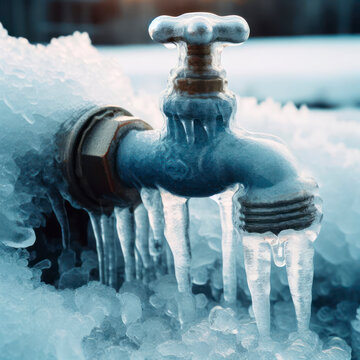Tips to Prevent Frozen Pipes in Winter: Pro Advice
Tips to Prevent Frozen Pipes in Winter: Pro Advice
Blog Article
The content further down on the subject of How to prepare your home plumbing for winter weather is especially motivating. Try it and draw your own personal results.

Cold weather can ruin your plumbing, particularly by freezing pipelines. Right here's exactly how to prevent it from happening and what to do if it does.
Intro
As temperature levels drop, the danger of icy pipelines increases, potentially resulting in expensive repairs and water damage. Comprehending how to stop frozen pipelines is critical for home owners in chilly environments.
Understanding Icy Pipelines
What causes pipes to freeze?
Pipelines freeze when revealed to temperature levels below 32 ° F (0 ° C) for expanded durations. As water inside the pipelines ices up, it broadens, taxing the pipeline walls and possibly triggering them to burst.
Dangers and problems
Icy pipelines can bring about water disturbances, residential or commercial property damages, and expensive repairs. Burst pipes can flooding homes and create comprehensive structural damage.
Indications of Frozen Pipes
Identifying icy pipelines early can prevent them from bursting.
Just how to identify frozen pipelines
Search for decreased water circulation from taps, unusual smells or sounds from pipes, and visible frost on subjected pipes.
Avoidance Tips
Insulating susceptible pipelines
Cover pipes in insulation sleeves or use heat tape to safeguard them from freezing temperatures. Concentrate on pipelines in unheated or external locations of the home.
Home heating strategies
Keep indoor spaces properly heated up, especially areas with plumbing. Open cupboard doors to allow warm air to flow around pipelines under sinks.
Safeguarding Exterior Plumbing
Garden hose pipes and outdoor faucets
Disconnect and drain yard tubes prior to winter. Mount frost-proof faucets or cover outside taps with shielded caps.
What to Do If Your Pipes Freeze
Immediate actions to take
If you think icy pipelines, keep faucets open up to relieve stress as the ice thaws. Make use of a hairdryer or towels soaked in hot water to thaw pipes gradually.
Long-Term Solutions
Structural modifications
Take into consideration rerouting pipelines away from outside walls or unheated areas. Add additional insulation to attic rooms, cellars, and crawl spaces.
Updating insulation
Purchase top quality insulation for pipes, attic rooms, and walls. Correct insulation aids preserve consistent temperature levels and decreases the risk of frozen pipelines.
Final thought
Stopping frozen pipes needs positive steps and fast feedbacks. By recognizing the causes, indicators, and safety nets, property owners can shield their plumbing throughout winter.
6 Proven Ways to Prevent Frozen Pipes and Protect Your Home
Disconnect and Drain Garden Hoses
Before winter arrives, start by disconnecting your garden hoses and draining any remaining water. Close the shut-off valves that supply outdoor hose bibs and leave the outdoor faucet open to allow any residual water to drain. For extra protection, consider using faucet covers throughout the colder months. It’s also important to drain water from any sprinkler supply lines following the manufacturer’s directions.
Insulate Exposed Pipes
Insulating your pipes is an effective way to prevent freezing. Pipe insulation is readily available at home improvement stores and is relatively inexpensive. Pay close attention to pipes in unheated areas such as the attic, basement, crawl spaces, or garage. Apply foam insulation generously to create a buffer against the cold. You can also wrap your pipes in heat tape or thermostat-controlled heat cables for added warmth.
Seal Air Leaks
Inspect your home for any cracks or openings that could let in cold air. Seal any holes around the piping in interior or exterior walls, as well as the sill plates where your home rests on its foundation. Additionally, make sure to keep your garage door closed unless you’re entering or exiting. Leaving it open creates a significant air leak that can lead to frozen pipes.
Allow Warm Air Circulation
During cold snaps, it’s essential to allow warm air to circulate evenly throughout your home. Leave interior doors ajar to promote better airflow. Open kitchen and bathroom cabinets to help distribute heat consistently around the rooms. If you have small children or pets, be sure to remove any household chemicals or potentially harmful cleaners from open cabinets for safety.
Let Faucets Drip
A small trickle of water can make a big difference in preventing ice formation inside your pipes. When temperatures drop significantly, start a drip of water from all faucets served by exposed pipes. This continuous flow helps prevent the water from freezing. Additionally, running a few faucets slightly can relieve pressure inside the pipes, reducing the chances of a rupture if the water inside does freeze.
https://choateshvac.com/6-proven-ways-to-prevent-frozen-pipes-and-protect-your-home/
:strip_icc()/snow-outdoor-faucet-pipes-4af65d1e5e904fb1aa7bf74071fe5d89.jpg)
I came across that piece on Preventing and dealing with frozen pipes while doing a search on the internet. Sharing is good. You just don't know, you may very well be helping someone out. Thank you for going through it.
See Availability Report this page